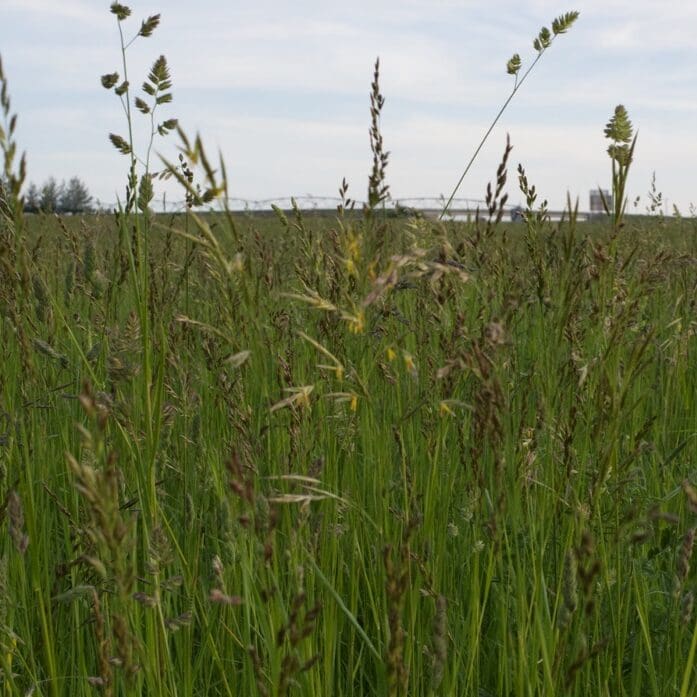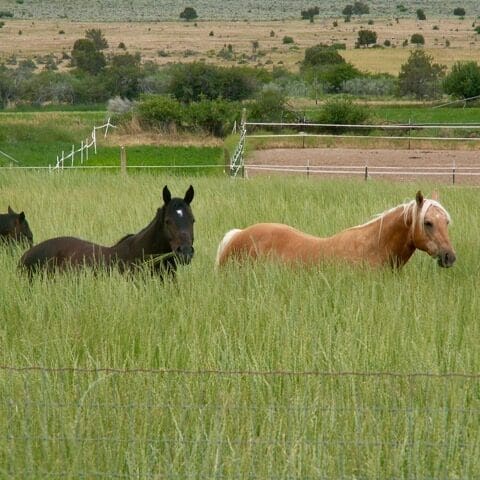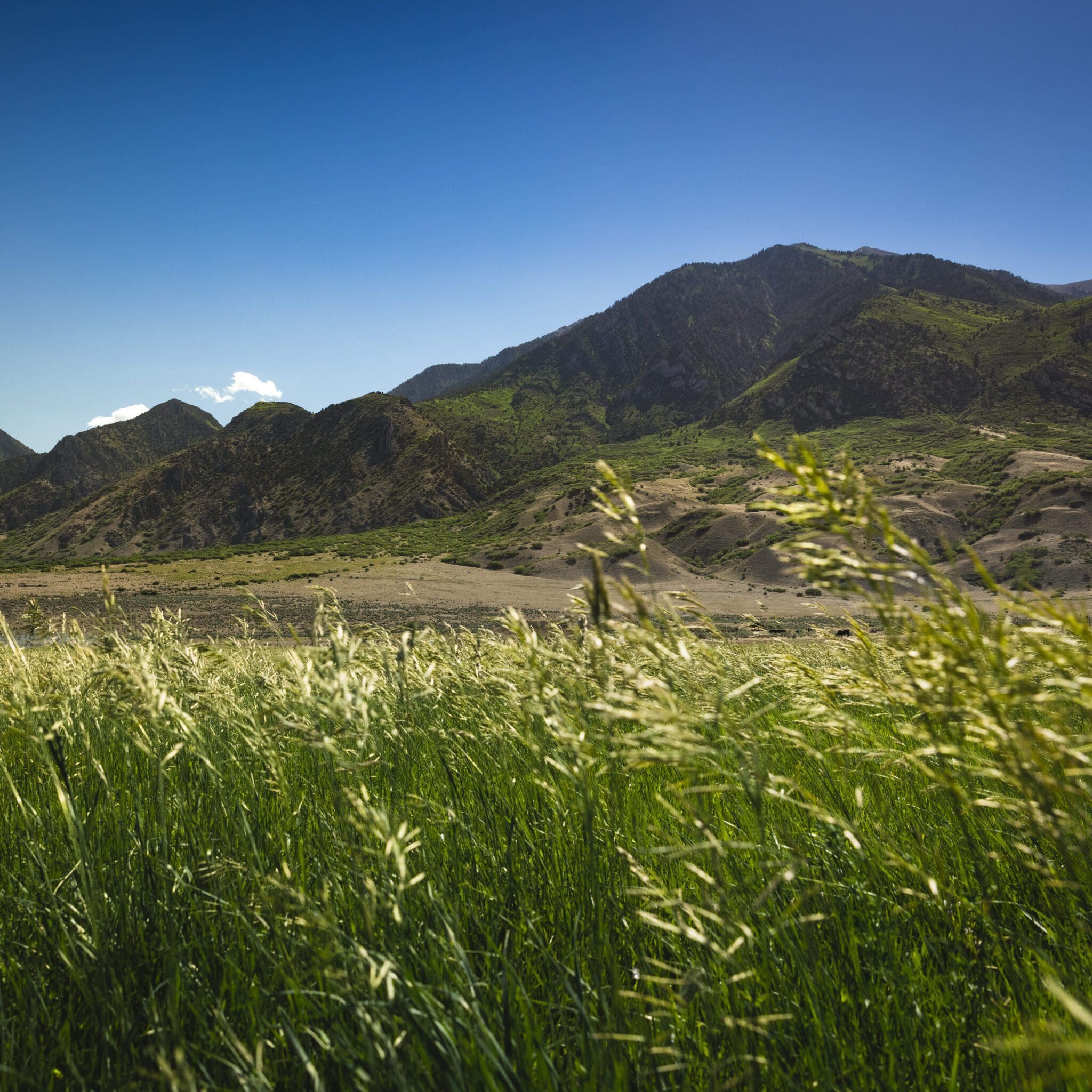Pastures are a fundamental component of raising livestock and practicing animal husbandry. Regardless of the animal, pastures are useful and often necessary to the health of our four-legged friends. Pastures vary widely in size, quality, purpose, and complexity. The availability of irrigation water, water quality, annual precipitation, climate, soil type, weather patterns, and competing species (like weeds) all have an effect on pastures. Your goals and the type of animals you are raising effect pasture quality and longevity. Establishing pastures can be an excellent and comparatively inexpensive long-term investment, and they need not be difficult or daunting.
Establishing good pasture and maximizing benefits is best achieved when we adhere to the basic principles outlined in this article. For the purposes of this article, pastures are loosely defined as a grass and/or forb mixture of some kind.
Selecting the Rights Species:
Every geographic area has different growing conditions. There are a number of species that establish and grow well in virtually every climate in North America, but some soils and climates require customization. The eastern U.S. and coastal regions generally have acidic soils while the midwest has neutral soils. The Intermountain West and Great Basin generally have salty or high pH soils. Annual precipitation ranges from two to three inches in the desert Southwest to over 400 inches in the Pacific Northwest. There are species appropriate for all of them.
When establishing pastures, your specific goals or the kind of livestock you feed also determine what you plant. Climate and weather patterns play a part. Feeding and cutting patterns should be considered. Species that are early, mid or late maturing can be utilized to serve a combination of cut-only, cut and graze, or graze-only scenarios.
Coffee shop knowledge is usually readily available, and agencies like Soil and Water Conservation Districts, the FSA, and NRCS are great sources of help. They can make recommendations that will match your conditions with your goals. Using the right species will ensure pasture establishment and longevity and maximum health and forage value for your animals.
Site Preparation:
A good pasture starts by managing competing species and controlling weeds at least a full season before sowing seeds. Undesirable species complete for real estate, sunlight, nutrients, and water and should be managed or eliminated well in advance. ALL soils have a “seed bank” of seeds dating back millennia and likely include seeds from every species that has ever lived on your plot. Seeds can lie dormant for centuries, so even if you have sprayed chemicals, burned or farmed for years, turning soil will expose seeds from under the surface and they will germinate and grow.
Pasture mixes perform best when sown in disturbed soils. Once a seed has exhausted its own natural store of energy it must pull nutrients from the surrounding soil. A crusty, hard surface or organic material that limits seed-to-soil contact will result in diminished seed establishment. A disturbed but firm seed bed allows good seed-to-soil contact. Plowing or disking is not necessary but can help create a good seed bed. Some form of light surface disturbance is recommended and can be achieved with something as simple as a hard tooth rake in small plots or a tractor-pulled harrow in large plots. An ATV, utility vehicle, or truck pulling any item that will scarify the surface is better than no disturbance at all. No-till drilling is a popular and successful method and minimizes disturbance to already healthy soils. No-till drills loosen soil, sow seed, and compress the surface simultaneously and are a recommended method when establishing pastures.
Planting Time: Follow Mother Nature
In very general terms, the reproductive cycle of all pasture grasses are essentially the same: plants grow from an established root clump (perennials) or a seed, reproduce and form seed heads. The seeds depart from the parent plant, follow natural distribution methods, establish in the soil, and repeat the process. The process generally follows a spring, summer, and fall pattern.
Best results are achieved when you work within these natural patterns. In most geographic areas late summer and fall are the best time to sow pasture seed. (Annual grasses like small grains follow a different cycle and are usually planted early spring) Fall planting is sometimes called a “dormant planting” where the seed lies dormant until spring rains, runoff, and snow melt fuel the germination cycle. In warm season areas sowing before or during the summer monsoons is often recommended. In arid climates like the desert Southwest, late winter sowing has been very successful.
Sowing Seed:
Sowing methods are connected to soil preparation methods. If a no-till drill or common grain drill are used, everything happens in one pass. The broadcast method of sowing is least expensive, most common, and very effective. Broadcasting can be as simple as distributing seeds by hand or a small fertilizer spreader, or distributing with a calibrated spreader mounted on an ATV or tractor.
A word of caution here: sowing seeds too deep is the #1 cause of failure to establish. The vast majority of grass and forb species germinate and establish ON THE SURFACE or barely covered. Plant seeds NO DEEPER than 1/4 inch unless the species you are sowing dictate otherwise.
Planting rates average from 15-20 pounds per acre broadcast, but can be more or less. Refer to the recommendations for each species. Planting rates will vary from site to site depending on the species you plant, annual rainfall, aspect, slope, soil type, and the end goals of your project.
Grazing Your Pasture:
Allow your pasture to establish well before you graze. Grazing too early will negatively impact the longevity and density of your pasture. Pastures establish more quickly in some areas than others, and some species establish more rapidly than others. Both kinds are commonly found in the same mix. As a general rule, allow at least one season for your pasture to establish. Animals that pull plants to feed should be turned in later than those that cut.
Where possible, divide your pasture into paddocks and practice rotational grazing. This allows portions of your pasture to rest, recover, and regrow while you are feeding in other areas. Avoid trampling and overgrazing. Good pastures with sufficient acreage can be cut and baled at intervals appropriate to your region.
Following these basic recommendations when establishing pastures will increase your chances of success and secure long-term pasture investments.
Recommended Pasture Mixes
Not sure where to get started? Take a look at our top 3 pasture mixes that excel for most purposes.


